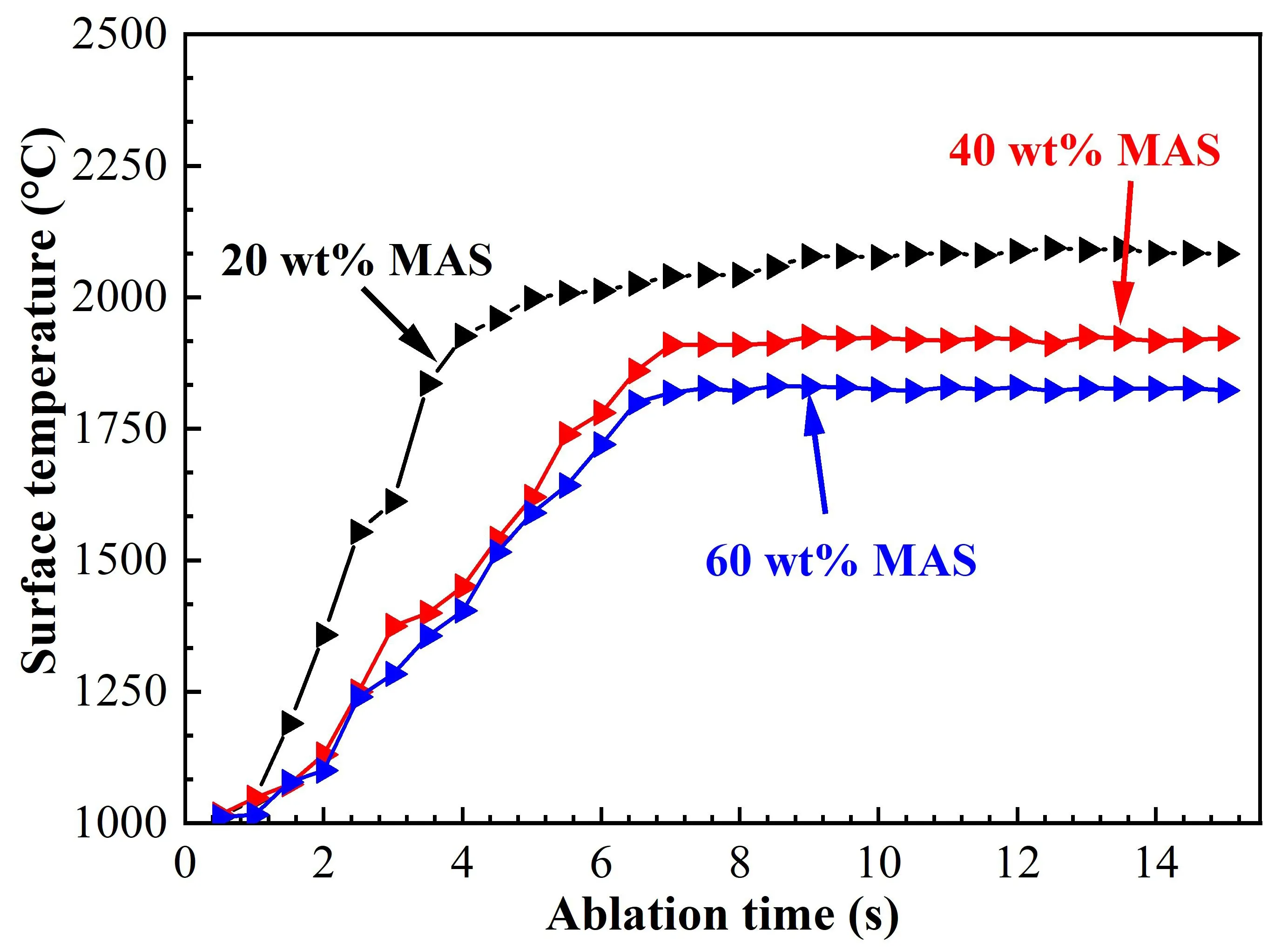Artiles
Open Access
Article
06 January 2025A Bounded-Function-Based Scheme for Finite-Time Stabilization of a NWMR with Input Constraints
This paper addresses the finite-time stabilization problem for a nonholonomic wheeled mobile robot (NWMR) with input constraints. By utilizing the hyperbolic tangent function tanh(·), bounded finite-time stabilization controllers are developed. In addition, an explicit upper-bound estimate for the closed-loop settling time is given, and the level of input constraints is characterized by parameters that depend on the actuator’s capacity. A thorough finite-time stability analysis is carried out using appropriate Lyapunov functions. For a compact set contained in the domain of attraction, a guideline is presented to clarify how to construct it. Finally, simulation results show the effectiveness of the developed controllers.
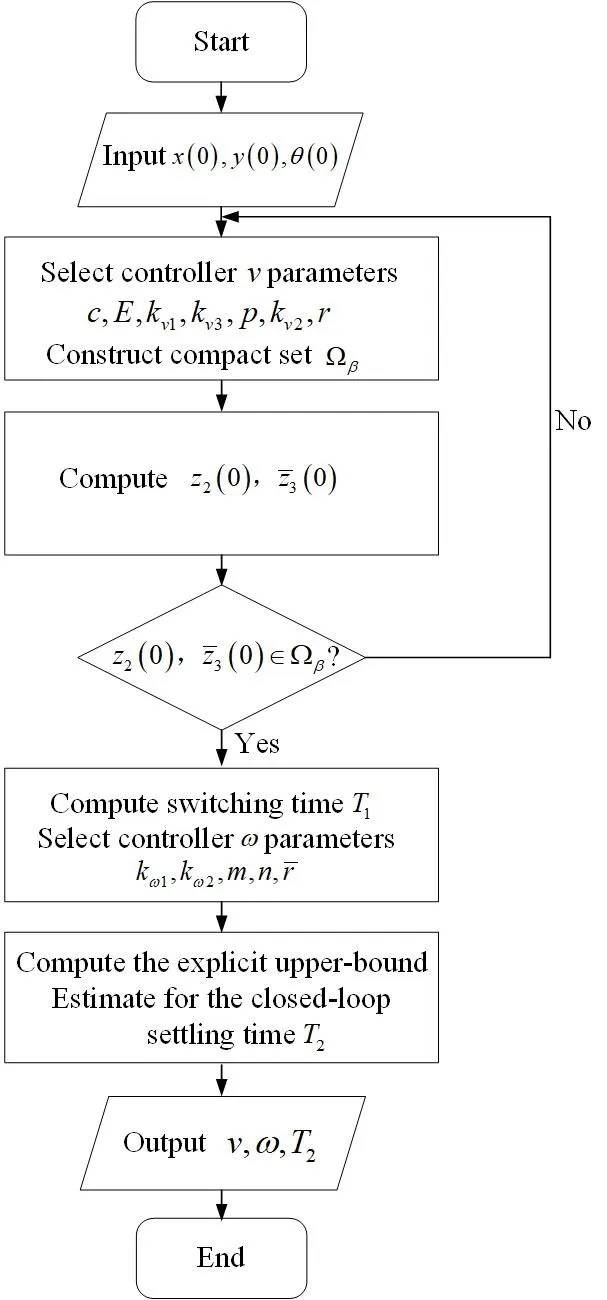
Open Access
Commentary
03 January 2025Geographies of Peripheral Rural Areas—Some Comments
The dominance of positivist approaches has led to the development of center-periphery models, which establish a relatively naturalized relationship between urban core areas and residual rural areas. Recent approaches to planetary rural geographies provide an opportunity to re-situate this issue and address it within the context of the revitalization of many rural areas, not only in the global North but also in the global South. However, multiple competing realities continue to shape the dynamics of these spaces. In large areas of the global South, material challenges persist despite some promising trends, while in the global North, dynamics are largely influenced by post-industrial societies. Africa serves as a relevant example to illustrate the limitations and shortcomings of recent planetary approaches to rural geography development. As an alternative, smaller-scale approaches focusing on community participation and the living conditions of people are proposed.
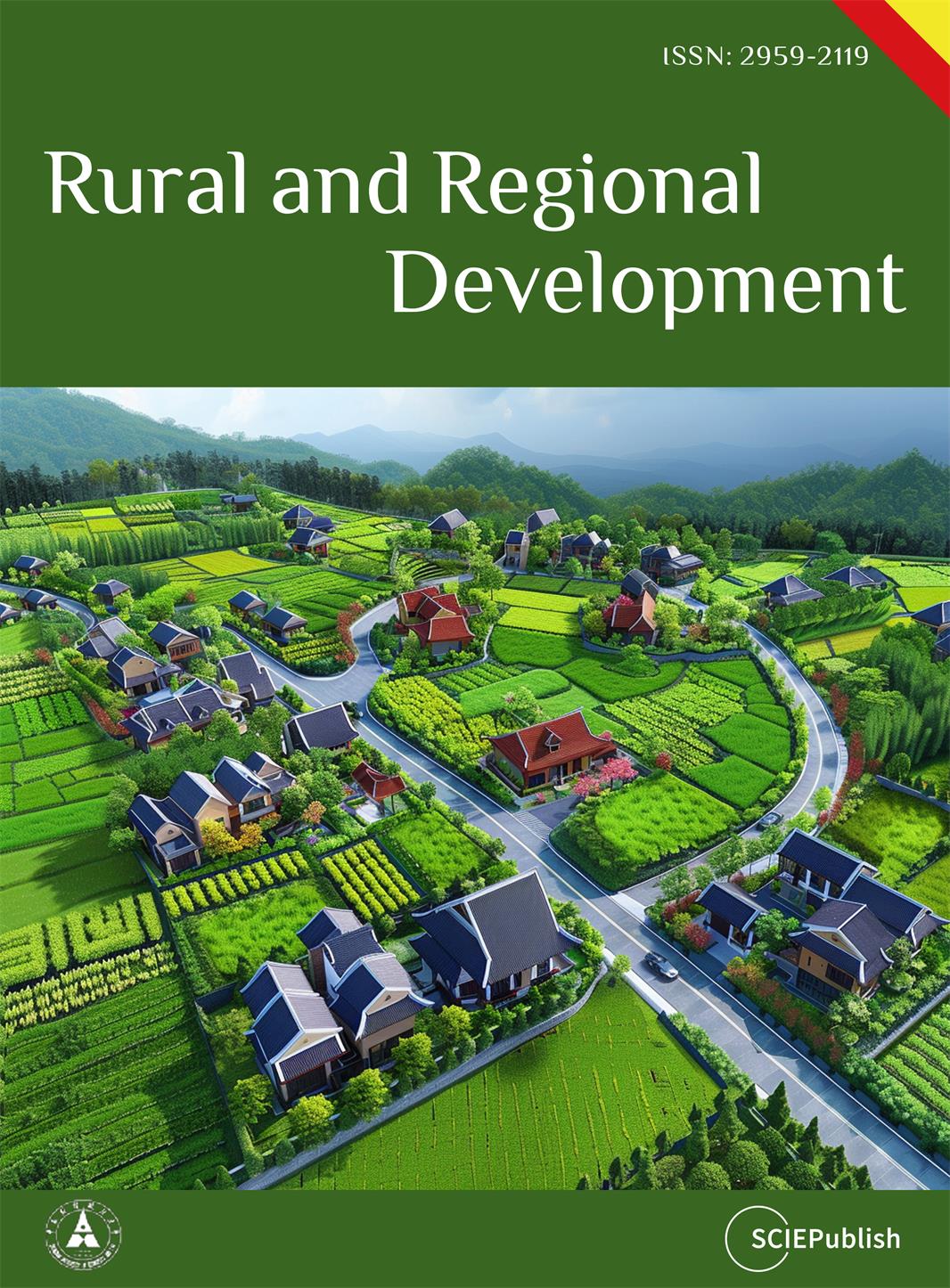
Open Access
Review
02 January 2025Cell-Autonomous and Non-Cell-Autonomous Antiviral Immunity via siRNA-Directed RNAi in Drosophila melanogaster
In Drosophila melanogaster, the siRNA-directed RNAi pathway provides crucial antiviral defenses. Cell-autonomously, Dicer-2 (Dcr-2) recognizes and cleaves viral dsRNA into siRNAs, which are incorporated into the RNA-induced silencing complex (RISC). Argonaute 2 (Ago2) then targets and cleaves viral RNA, preventing replication. Non-cell-autonomously, infected hemocytes secrete exosomes containing viral siRNAs, spreading antiviral signals to other cells. Additionally, tunneling nanotubes can transfer RNAi components between neighboring cells, further enhancing systemic immunity. These findings highlight the sophisticated antiviral strategies in Drosophila, offering insights for broader antiviral research.
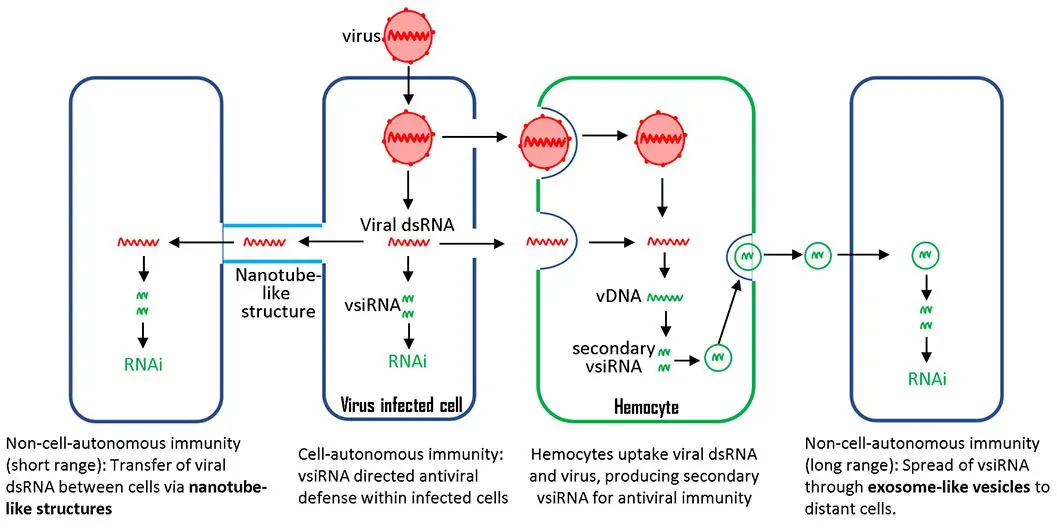
Open Access
Review
02 January 2025Potential Regulatory Role of Appetite-Regulating Hormones and Exercise Associated with Emotional Eating: A Narrative Review
Emotional eating denotes the behavior in which individuals regulate their emotions by eating in response to adverse emotions or psychological stress. Emotional eating is tightly linked to health issues such as obesity and metabolic disorders, and may give rise to unhealthy eating habits. The aim of this review is to investigate the psychological and physiological mechanisms of emotional eating, probe the potential impact of exercise as a tool for emotional regulation in emotional eating, and its role in avoiding the development of emotional eating into binge eating disorder. In addition, the review assesses gender differences and the potential risks of exercise interventions, aiming to provide theoretical support for clinical applications. A literature search was performed to assess the literature relevant to the role of appetite-controlling hormones and exercise in emotional eating. The search process covered multiple databases, including PubMed, Web of Science, Scopus, and Google Scholar. It used a combination of keywords such as “emotional eating”, “appetite-controlling hormones”, “exercise”, and “mood regulation” to ensure comprehensive coverage of relevant areas. Inclusion criteria were original research, review articles, and meta-analyses published in English with adult participants. Exclusion criteria included studies relevant to non-emotional appetite changes due to diseases, studies without exercise interventions, and those missing physiological data. The final selected literature was reviewed and considered by independent reviewers to ensure the quality and relevance of the research. Studies suggest that emotional eating is tightly relevant to dysfunction in emotional regulation mechanisms. Specifically, when encountering adverse emotions, individuals may choose high-calorie foods to seek emotional comfort. Exercise, as an effective method of emotional regulation, can reduce emotional eating by modulating appetite hormones (such as leptin and ghrelin) and enhancing emotional well-being. However, the effects of exercise differ by gender, with women generally more likely than men to regulate emotions and lower appetite through exercise. Despite the positive regulatory effects of exercise, intense exercise may also give rise to adverse psychological and physiological effects, such as anxiety, depression, and overtraining syndrome. Hence, exercise interventions should be modified according to individual conditions to avoid excessive risks. Emotional eating overlaps with a binge eating disorder, and if emotional eating is not efficiently managed, it may progress to a binge eating disorder. Thus, exercise interventions could act as an effective means of preventing emotional eating from evolving into a binge eating disorder. In summary, this review emphasizes the importance of emotional regulation in modulating emotional eating, and the positive role of exercise interventions in emotional eating, notably in avoiding binge eating disorder. Future research should further probe the optimal exercise intervention strategies and focus on gender differences and the potential risks of exercise interventions.
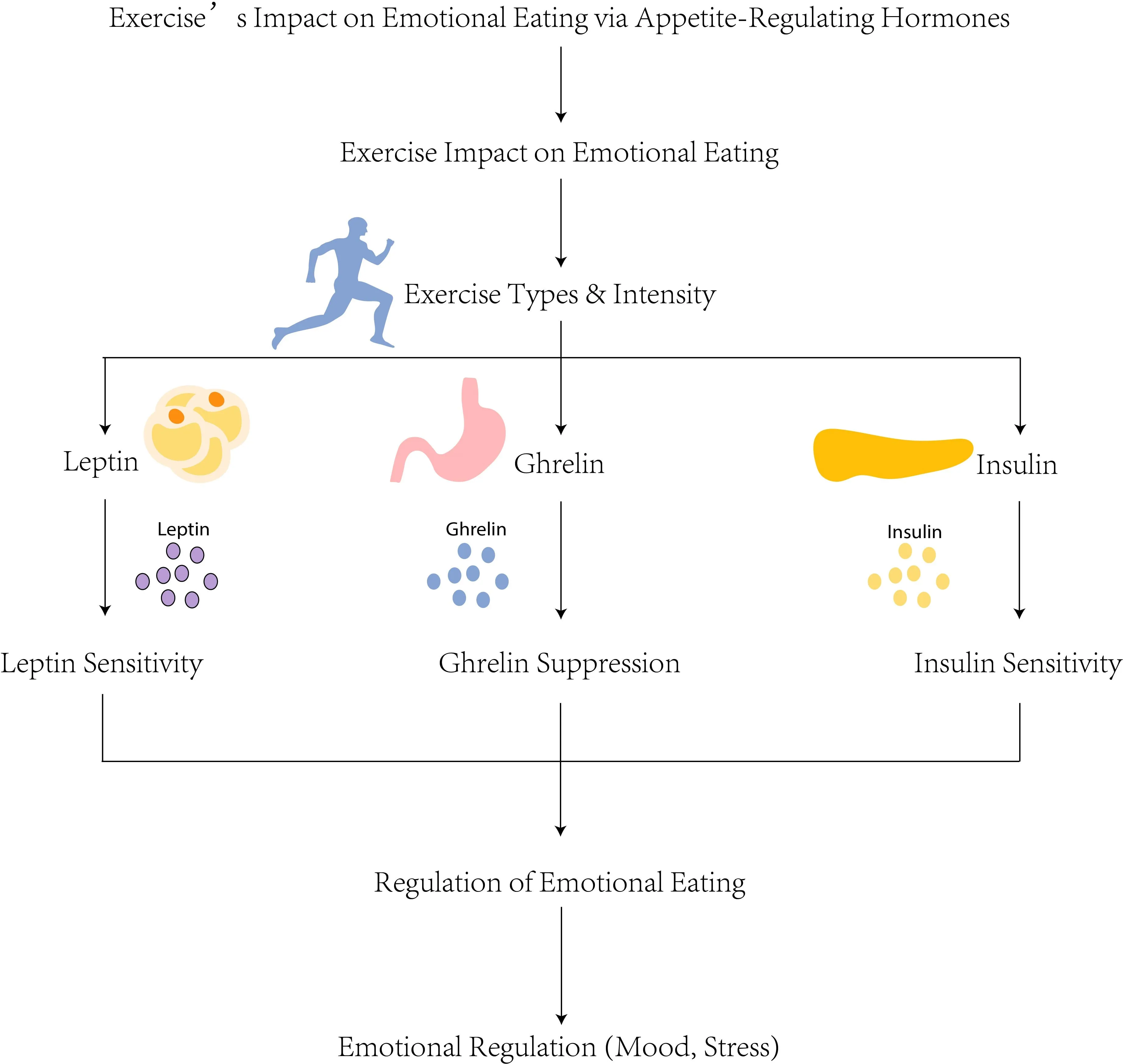
Open Access
Article
31 December 2024Porous 430L Stainless Steel as a Support Layer for Planar
Solid Oxide Cells: Effect of Porosity on Mechanical Properties
Porous 430L stainless steel
components fabricated via tape casting underwent mechanical testing for
potential in-vehicle application as mechanical supports of solid oxide cells.
Tests included three-point bending up to 5% strain to assess flexural strength,
yield strength, Young’s modulus, indentation hardness, and microstructural
characterization. This study aimed to establish the relationship between pore
former size and volume fraction and the resulting yield strength. It also
compared sintered material without pore former, focusing on the influence of a
wide range of porosity of up to 46.5%. The materials exhibited an inverse
relationship for Young’s modulus, hardness and yield strength as a function of
porosity. The lowest flexural yield strength obtained was approximately 120 MPa
at the highest porosity of 46.5%, meeting the requirement of 59 MPa for the
bipolar plates of existing proton-exchange membrane fuel cells.
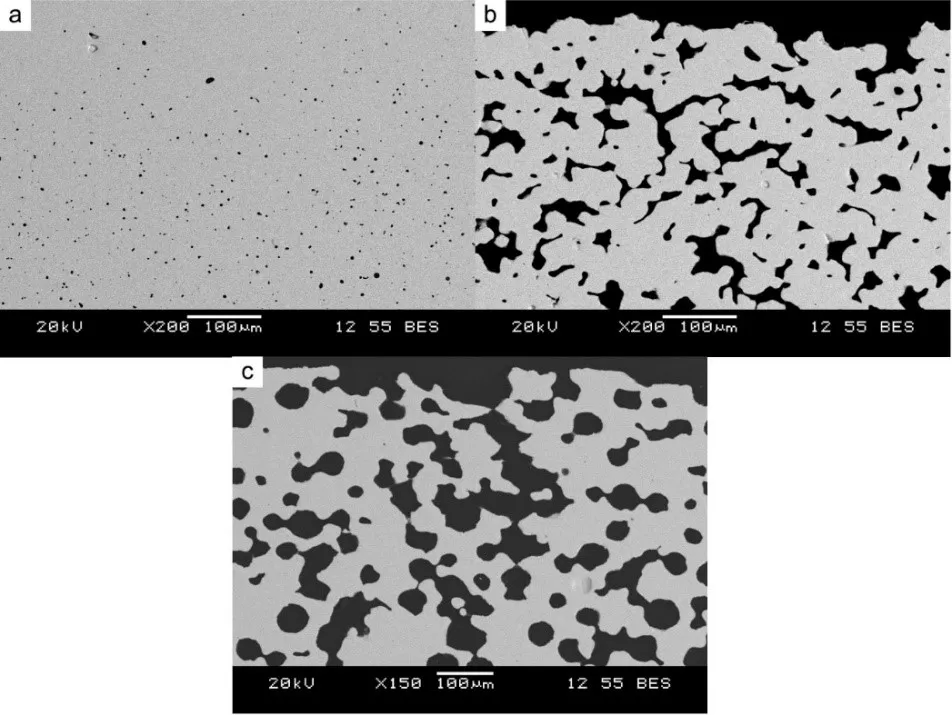
Open Access
Perspective
31 December 2024
Offshore Renewable Energy Advance
Offshore renewable energy generation has become an important means to address the energy crisis and climate change, which has gained widespread attention in recent years. This article presents classic domestic and international cases that introduce the development and industrial transformation of generation technologies for offshore wind, offshore photovoltaics, ocean wave energy, tidal energy and temperature difference energy. Offshore power generation projects face challenges in design, safety, long-term operation and economic feasibility. Offshore renewable energy generation is gradually moving towards industrialization, and is expected to become a key component of global energy supply in the future with technological advancements and policy support, providing strong support for tackling climate change and achieving sustainable development goals.

Open Access
Review
30 December 2024
Mini Review on the Photocatalytic Removal of Gaseous Ammonia: Current Status
and Challenges
Ammonia
gas (NH3) is a notorious malodorous pollutant released mainly in
agriculture and industry. With the increasing demand for ammonia, environmental
pollution caused by ammonia discharge has seriously threatened human health and
safety. Due to the discrete emission and low concentration of NH3,
photocatalytic oxidation is an economical and efficient treatment strategy. TiO2,
as a common photocatalyst, has been widely used by researchers for the
photocatalytic removal of NH3. In addition, surface modification,
element doping, semiconductor recombination and metal loading are used to
improve the utilization rate of solar energy and carrier of TiO2 so
as to find a catalyst with high efficiency and high N2 selectivity.
Further, at present, there are three main removal mechanisms of NH3 photocatalytic oxidation: ·NH2 mechanism, iSCR mechanism and N2H4 mechanism. Among them, N2H4 mechanism is expected to be
the main removal path of NH3 photocatalytic oxidation in the future
because the removal process does not involve NOx and nitrate. This
review summarizes recent studies on the photocatalytic oxidation of NH₃,
focusing primarily on NH₃ removal efficiency, N₂ selectivity, and the underlying
removal mechanisms. Additionally, the potential future applications of NH₃
photocatalytic oxidation are discussed.
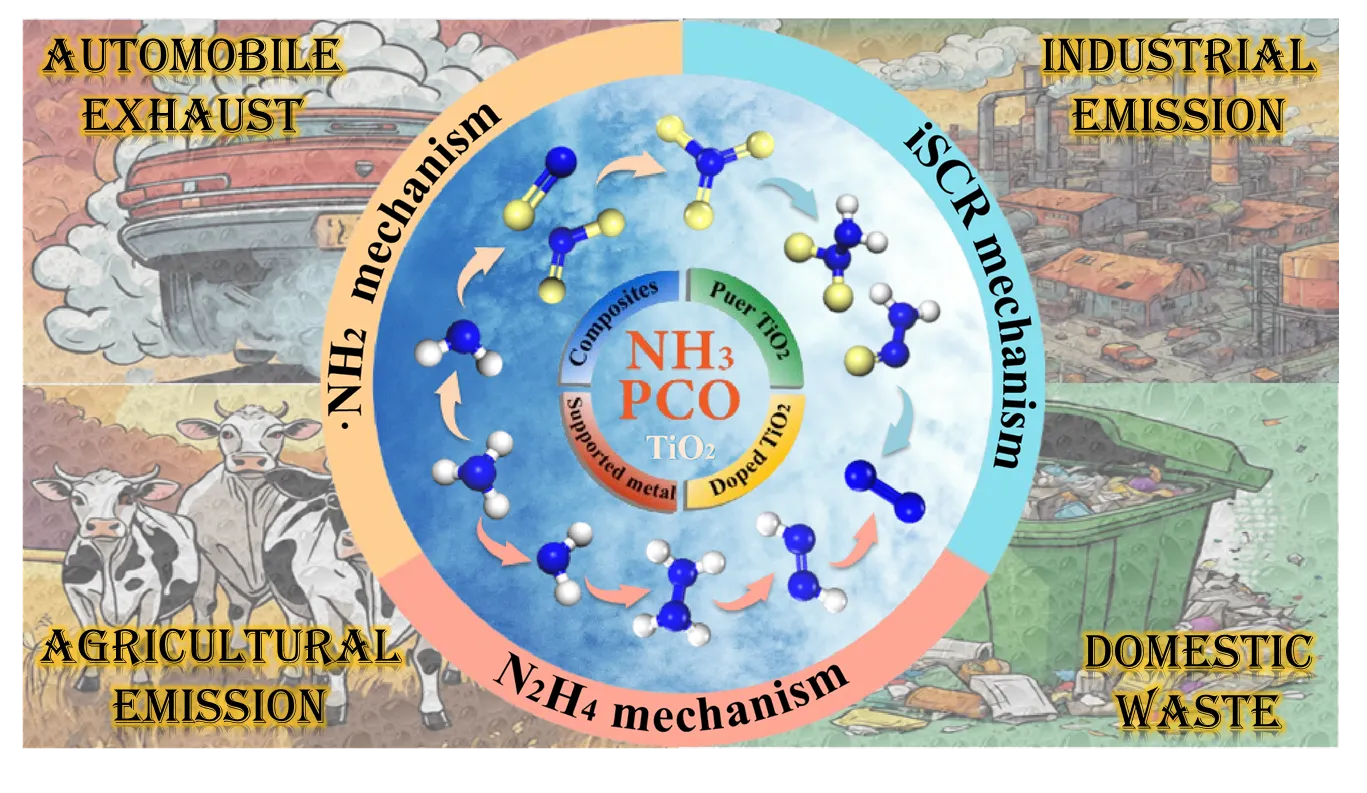
Open Access
Review
30 December 2024
Fire-Retardant
Wastepaper Reinforced Waste Polyethylene Composite: A Review
The increase in fire
outbreaks recently and the need for eco-friendly and fire-resistant materials
have inspired a wave of studies, focusing on producing innovative composite
materials with effective fire-resistant properties. This review delves into the
world of fire-resistant wastepaper-reinforced waste polyethylene composites.
Using wastepaper as a strengthening factor in polyethylene matrices, combined
with fire-retardant additives like nanoparticles, introduces a hopeful path for
waste management and improved material properties. This work carefully
considers the combining approaches, physical and mechanical properties,
fire-resistant mechanisms, and environmental impacts of these composites. The
review underscores the possible and potential applications, difficulties, and
prospects of such environmentally friendly materials in various industries.
Understanding these composites’ blending, attributes, and conceivable
utilization is essential for advancing maintainable and fire-safe material innovation
in pursuing a greener future.
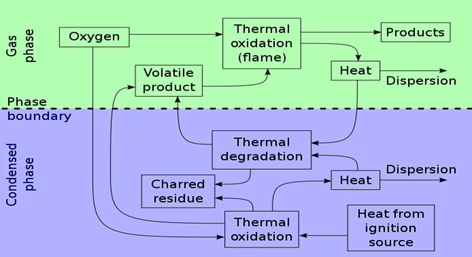
Open Access
Communication
30 December 2024Magnetic Solid Phase Extraction of Paeonol and Paeonoflorin from Moutan Bark with Magnetic Graphene Oxide
Herbal medicine plays an
important role in modern medicine and separation of the active ingredients from
herbal medicine is vital for convenient and safe usage. Paeonol and
paeonoflorin are the active ingredients in the widely used herbal medicine of
moutan bark. In this study, the composite of graphene oxide-Fe3O4 nanoparticles (GO-Fe3O4) was synthesized and used as a magnetic
absorbent to extract paeonol and paeonoflorin from the herbal medicine of
moutan bark. The adsorption of paeonol and paeoniflorin on GO-Fe3O4 rapidly reached equilibrium (within 10 min) due to the high absorption
capability of GO. Thermodynamics and kinetics for the absorption process were
studied. The optimal condition for the elution of the target compound from GO-Fe3O4 was the use of 2 mL of a mixed solvent (methanol and dichloromethane, 1:1 by
volume) with 0.2% formic acid for 5 min. The GO-Fe3O4 adsorbent possesses the advantages of rapid adsorption and convenient
separation. GO-Fe3O4 can be used over 6 times without
losing absorbing capacity. This method is efficient, convenient and rapid, thus
possesses a high potential for the separation of active ingredients from herbal
medicine.

Open Access
Article
27 December 2024Effect of Magnesium Aluminum Silicate Addition on the Ablation Resistance of BN Matrix Ceramics
Ablation resistance is a critical factor in evaluating the performance of BN-based ceramic composites under extreme service conditions. This study investigates the ablation behavior and underlying mechanisms of BN-MAS wave-transparent ceramic composites with varying magnesium aluminum silicate (MAS) content through oxyacetylene torch tests. The results reveal that increasing the MAS content reduces the mass ablation rate from 0.0298 g/s to 0.0176 g/s and the linear ablation rate from 0.149 mm/s to 0.112 mm/s. The incorporation of MAS into h-BN ceramics significantly lowers the surface ablation temperature, primarily due to the evaporation of B2O3 (g) and MAS ceramics. Cross-sectional analysis of the ablated composites indicates the presence of micro- and macro-spallation in the ablation center. The primary ablation products are magnesium-aluminum borosilicate glass and mullite. Key ablation mechanisms include the oxidation of h-BN under flame exposure, the erosion of viscous oxidation products, and the physical degradation of the matrix caused by the high-velocity gas flow.
